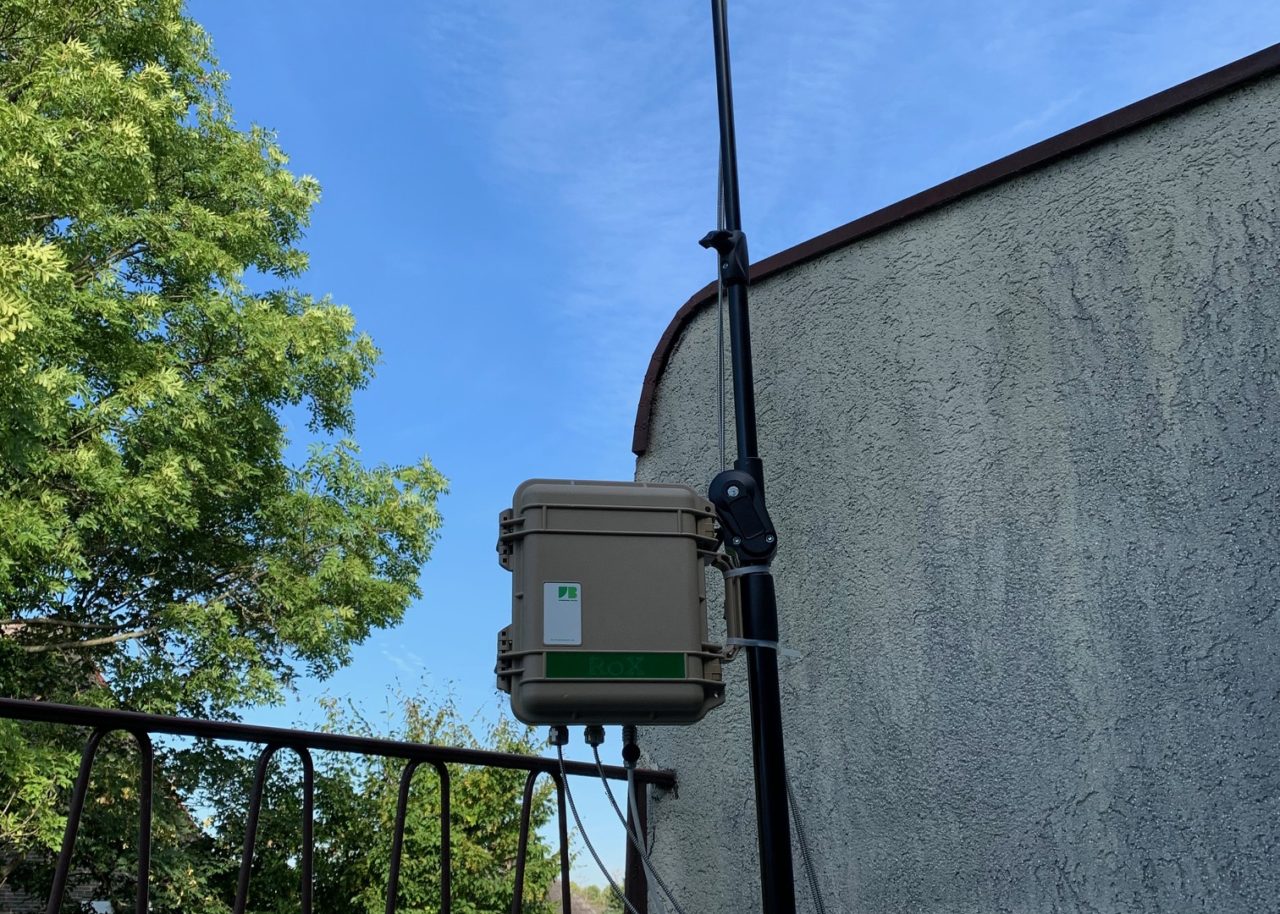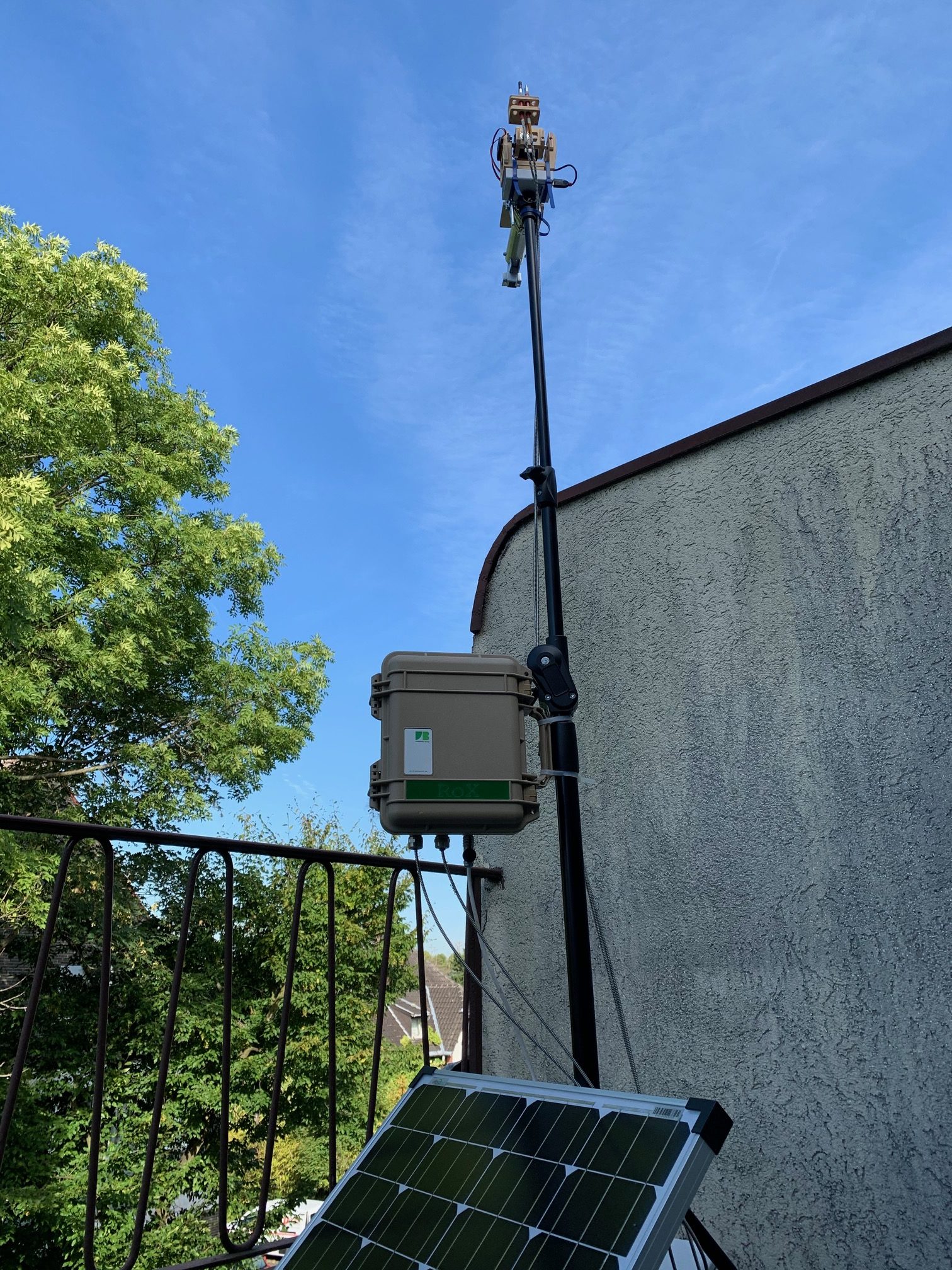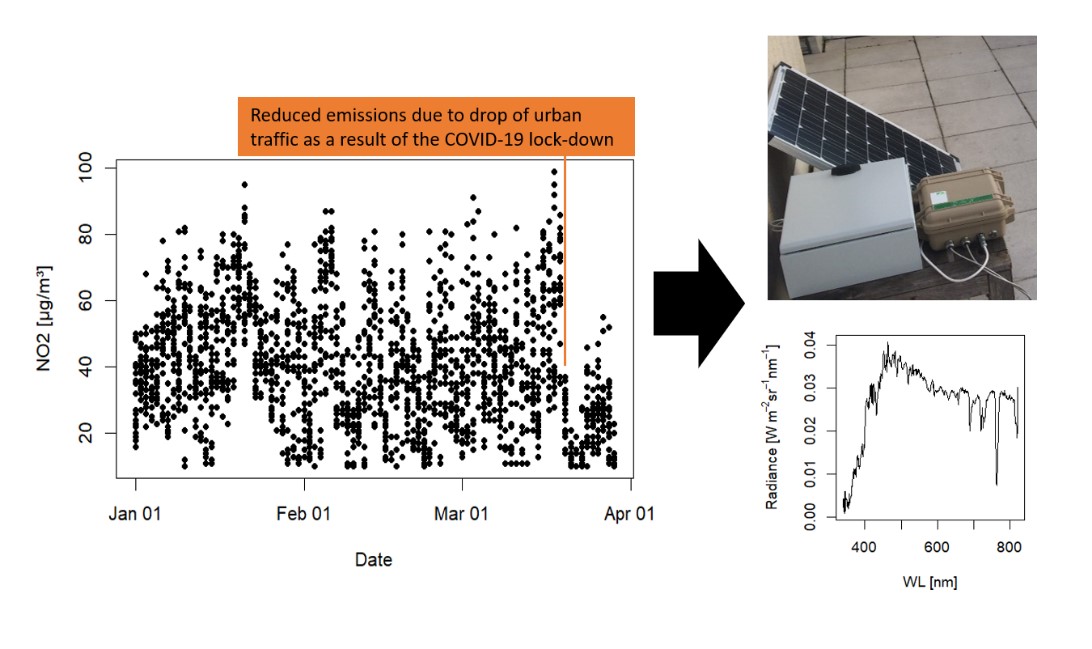
In early 2020 started the coronavirus pandemic to spread around the globe. Germany was also severely affected, which required the governmental authorities to enact lock-down measures to a certain degree across the entire country that caused traffic to decrease significantly. Long-term tests of the field-spectrometer system RoX have been running throughout winter and spring of early 2020 as part of an effort to integrate new technology for automated data transfer and status monitoring of the instrument within the frame of the research project mDrones4Rivers.

RoX in action
Anthropogenic air pollution by traffic in urban areas is a known risk factor to human health. Especially, NOx are under the strong suspicion to further increase the viral infectivity of COVID-19 and similar diseases.
A comprehensive analysis of the hyperspectral data has been performed as an effort to model NOx concentration from continuous down-welling radiance measurements in the VIS/NIR range. The study has just been published in Science of the total Environment.
Results suggest that automated field-spectrometer systems like the RoX could contribute as part of an integrated strategy to monitor and mitigate environmental risk factors that support the coronavirus pandemic or similar diseases in the future.
